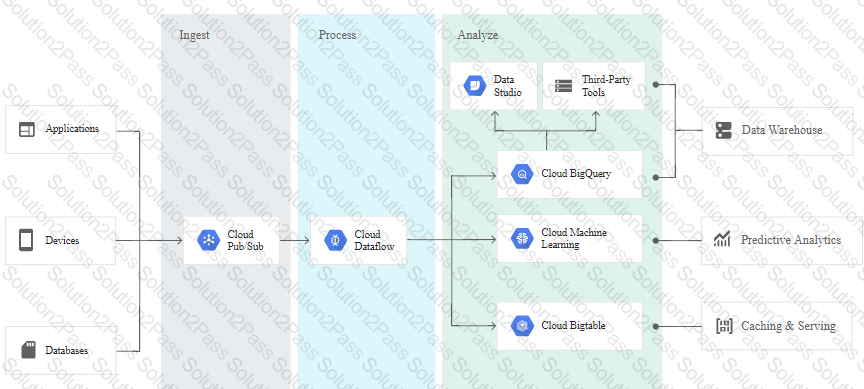Professional-Cloud-Architect Google Certified Professional - Cloud Architect (GCP) Free Practice Exam Questions (2025 Updated)
Prepare effectively for your Google Professional-Cloud-Architect Google Certified Professional - Cloud Architect (GCP) certification with our extensive collection of free, high-quality practice questions. Each question is designed to mirror the actual exam format and objectives, complete with comprehensive answers and detailed explanations. Our materials are regularly updated for 2025, ensuring you have the most current resources to build confidence and succeed on your first attempt.
Total 277 questions
For this question, refer to the TerramEarth case study.
TerramEarth plans to connect all 20 million vehicles in the field to the cloud. This increases the volume to 20 million 600 byte records a second for 40 TB an hour. How should you design the data ingestion?
For this question refer to the TerramEarth case study
Operational parameters such as oil pressure are adjustable on each of TerramEarth's vehicles to increase their efficiency, depending on their environmental conditions. Your primary goal is to increase the operating efficiency of all 20 million cellular and unconnected vehicles in the field How can you accomplish this goal?
For this question, refer to the TerramEarth case study.
TerramEarth's CTO wants to use the raw data from connected vehicles to help identify approximately when a vehicle in the development team to focus their failure. You want to allow analysts to centrally query the vehicle data. Which architecture should you recommend?
A)
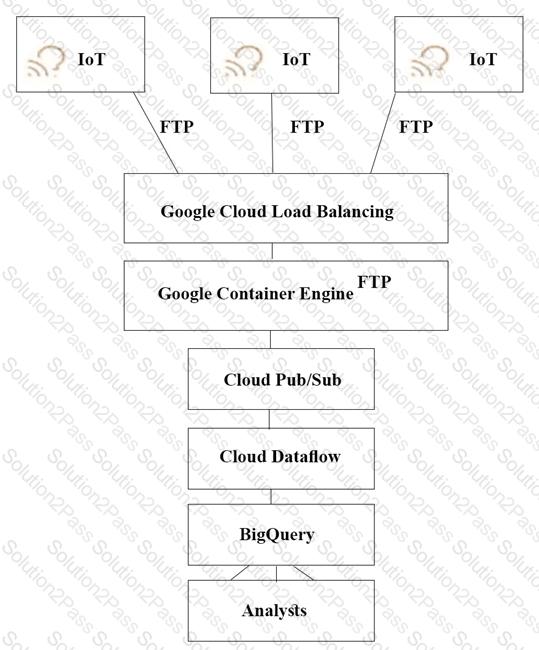
B)
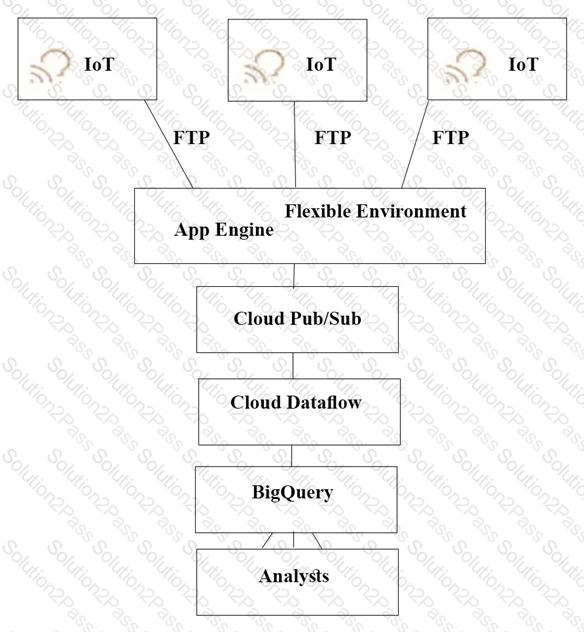
C)
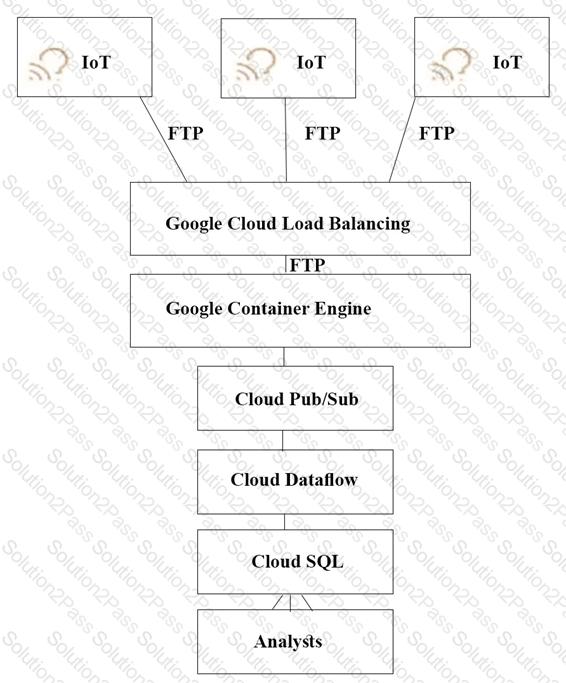
D)
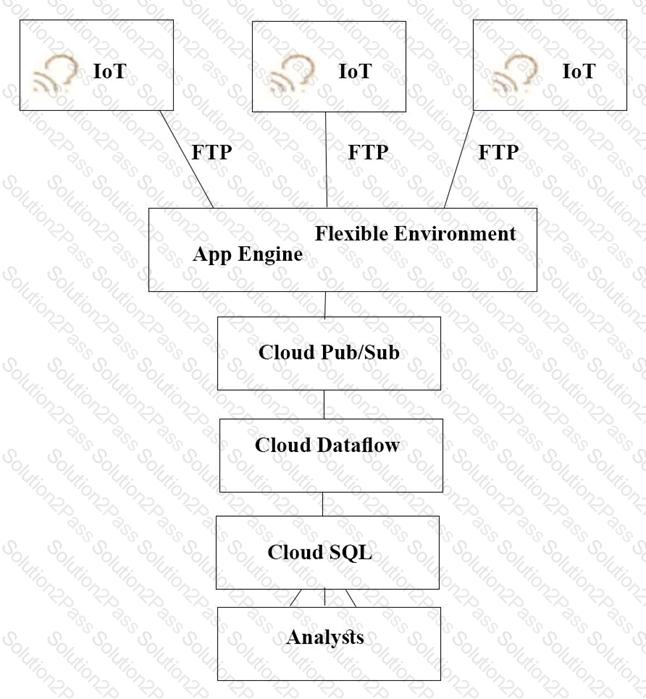
For this question refer to the TerramEarth case study.
Which of TerramEarth's legacy enterprise processes will experience significant change as a result of increased Google Cloud Platform adoption.
For this question, refer to the TerramEarth case study.
To speed up data retrieval, more vehicles will be upgraded to cellular connections and be able to transmit data to the ETL process. The current FTP process is error-prone and restarts the data transfer from the start of the file when connections fail, which happens often. You want to improve the reliability of the solution and minimize data transfer time on the cellular connections. What should you do?
For this question, refer to the TerramEarth case study
You analyzed TerramEarth's business requirement to reduce downtime, and found that they can achieve a majority of time saving by reducing customers' wait time for parts You decided to focus on reduction of the 3 weeks aggregate reporting time Which modifications to the company's processes should you recommend?
For this question, refer to the TerramEarth case study.
The TerramEarth development team wants to create an API to meet the company's business requirements. You want the development team to focus their development effort on business value versus creating a custom framework. Which method should they use?
For this question, refer to the TerramEarth case study.
You start to build a new application that uses a few Cloud Functions for the backend. One use case requires a Cloud Function func_display to invoke another Cloud Function func_query. You want func_query only to accept invocations from func_display. You also want to follow Google's recommended best practices. What should you do?
TerramEarth has about 1 petabyte (PB) of vehicle testing data in a private data center. You want to move the data to Cloud Storage for your machine learning team. Currently, a 1-Gbps interconnect link is available for you. The machine learning team wants to start using the data in a month. What should you do?
For this question, refer to the TerramEarth case study. TerramEarth has decided to store data files in Cloud Storage. You need to configure Cloud Storage lifecycle rule to store 1 year of data and minimize file storage cost.
Which two actions should you take?
For this question, refer to the TerramEarth case study. To be compliant with European GDPR regulation, TerramEarth is required to delete data generated from its European customers after a period of 36 months when it contains personal data. In the new architecture, this data will be stored in both Cloud Storage and BigQuery. What should you do?
For this question, refer to the TerramEarth case study. You are asked to design a new architecture for the
ingestion of the data of the 200,000 vehicles that are connected to a cellular network. You want to follow
Google-recommended practices.
Considering the technical requirements, which components should you use for the ingestion of the data?
You have broken down a legacy monolithic application into a few containerized RESTful microservices. You want to run those microservices on Cloud Run. You also want to make sure the services are highly available with low latency to your customers. What should you do?
For this question, refer to the TerramEarth case study. A new architecture that writes all incoming data to
BigQuery has been introduced. You notice that the data is dirty, and want to ensure data quality on an
automated daily basis while managing cost.
What should you do?
For this question, refer to the TerramEarth case study. Considering the technical requirements, how should you reduce the unplanned vehicle downtime in GCP?
TerramEarth has a legacy web application that you cannot migrate to cloud. However, you still want to build a cloud-native way to monitor the application. If the application goes down, you want the URL to point to a "Site is unavailable" page as soon as possible. You also want your Ops team to receive a notification for the issue. You need to build a reliable solution for minimum cost
What should you do?
Dress4win has end to end tests covering 100% of their endpoints.
They want to ensure that the move of cloud does not introduce any new bugs.
Which additional testing methods should the developers employ to prevent an outage?
For this question, refer to the Dress4Win case study.
Dress4Win has asked you to recommend machine types they should deploy their application servers to. How should you proceed?
For this question, refer to the Dress4Win case study.
Dress4Win has asked you for advice on how to migrate their on-premises MySQL deployment to the cloud. They want to minimize downtime and performance impact to their on-premises solution during the migration. Which approach should you recommend?
For this question, refer to the Dress4Win case study.
Dress4Win has configured a new uptime check with Google Stackdriver for several of their legacy services. The Stackdriver dashboard is not reporting the services as healthy. What should they do?
Total 277 questions
